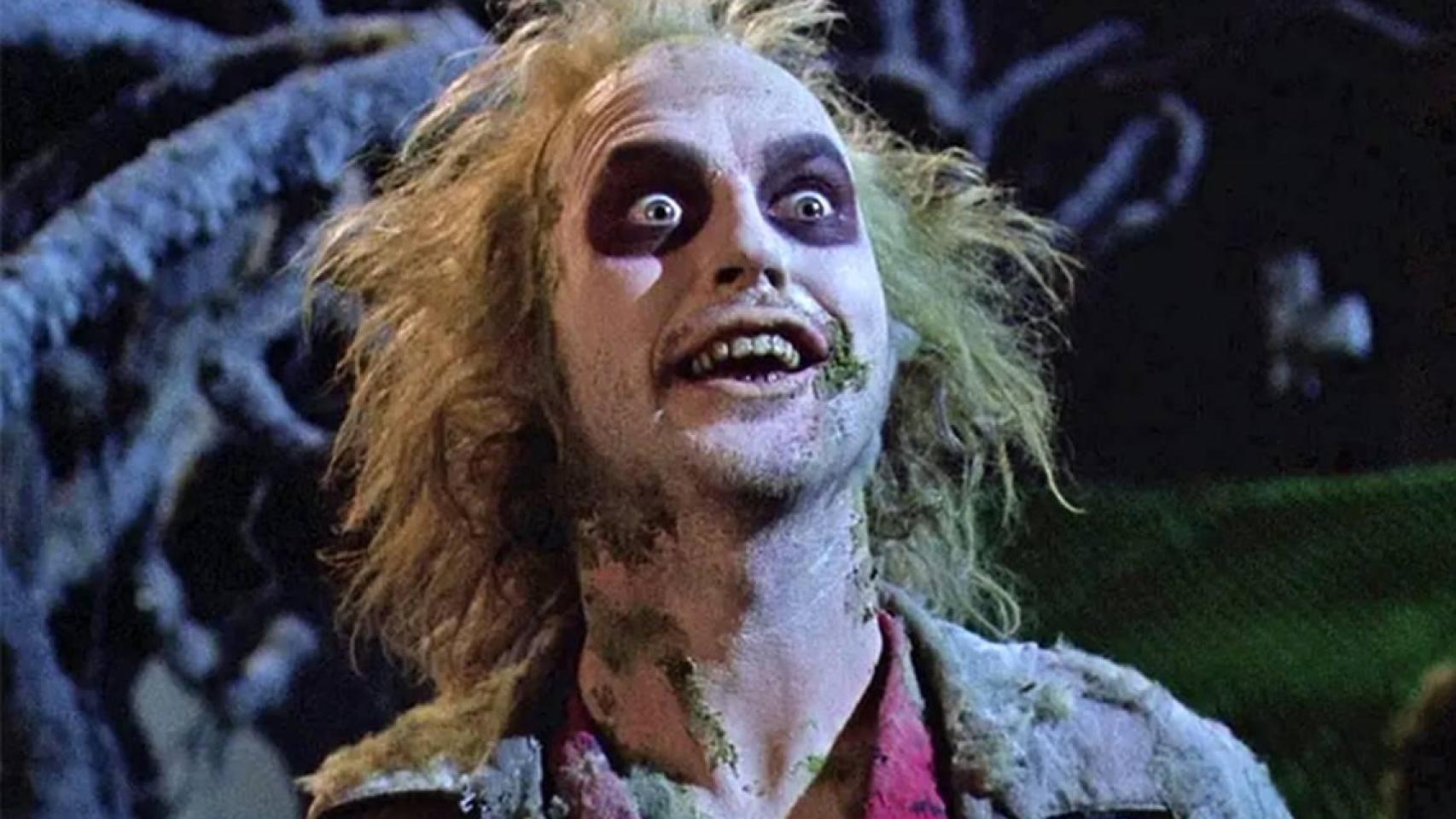Although it was the main axis of one of Tim Burton's best movies, we never knew the origin of Bitelchús -or Beetlejuice in English-. In fact, the 1988 film did not delve into the character's history itself and we had to wait almost forty years to find out where the mythical protagonist of that film comes from, because it is explained in the sequel to the film that has just been released in theaters: Bitelchús Bitelchús.
Trying to avoid spoilers for those who have not yet seen the movie, we collect all the details about the character's origins, which emerged from an idea by screenwriter Michael McDowell.
The character was born in his idea notebook in the mid-80s, when he wanted to try his luck in the world of cinema. Drawing inspiration from other classics of the horror genre like Ghostbusters (1984) and Poltergeist (1982), McDowell dared to write his own movie script with a story focused on the supernatural. Along with his partner Laurence Senelick, they brainstormed ideas to develop and in the middle of this process they had conflicts with their families, which sparked the inspiration they needed.
Using the concept of ghosts haunting humans as a base, Senelick modified this idea, changing the nature of these ghosts and flipping the roles, making them the good guys of the story and the humans the actual villains. It was from this foundation that the plot of the movie would be based, incorporating the rest of the elements into the script afterwards.
The original idea of Bitelchús - which is available on Netflix, Max, and Movistar Plus+- went through several rewriting phases and before becoming the movie we know, it had to undergo many changes. In fact, the initial goal was to make a more graphic and disturbing horror movie, instead of the dark comedy it ended up becoming.
'Beetlejuice'
At first, Betelguese - the name we see written in the first film - was going to be a demon with wings who would take the form of a man from the Middle East. Also, instead of being a prankster, he was actually going to be a killer, whose goal was to end the Deetz family rather than scare them. Finally, the movie took a drastic turn that led it to where it stands today.
On the other hand, the deaths of the Maitlands - the couple featured in the first film played by Alec Baldwin and Geena Davis - were also going to be much more graphic, as they were supposed to die drowned and in a much more traumatic way; and the ending was also conceived in a darker way, showing how Lydia dies and joins the Maitlands in the afterlife.
However, after undergoing many revisions, the movie script was modified into the version we saw in the end and all that was left was to find a director to take charge of the film.
After the success of his first feature film, Pee-Wee's Big Adventure (1985), Tim Burton was the right choice to assume the role, an ideal role for him, who has always been eager to express his fascination for everything scary. At that time he was developing the script for Batman, so it was the perfect time to take on another movie. And the rest is history.
The return of Beetlejuice
Tráiler | 'Bitelchús Bitelchús'
Almost forty years after the first film, last week Beetlejuice Beetlejuice premiered in theaters, the highly anticipated sequel. Starring Michael Keaton, Winona Ryder, Jenna Ortega, and Catherine O'Hara, among others, the horror comedy is back and is one of the best movies of the year so far.
It tells what happens after an unexpected family tragedy, when three generations of the Deetz family return to Winter River. Lydia's life, still haunted by Beetlejuice, takes a turn when her rebellious teenage daughter, Astrid, discovers the mysterious model of the city in the attic and the portal to the afterlife accidentally opens.
With looming problems in both realms, it's only a matter of time before someone says Beetlejuice's name three times and the mischievous demon returns to unleash his own chaos.
*This article has been automatically translated using artificial intelligence

